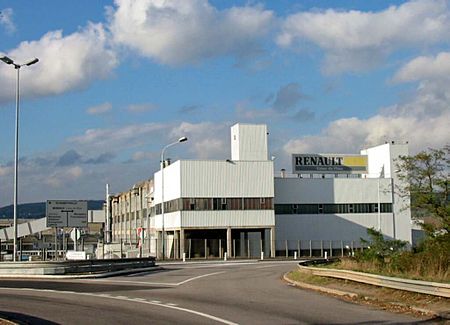Flins Renault Factory

The Flins Renault Factory (also known internally as the Pierre Lefaucheux Factory in memory of Pierre Lefaucheux, Renault's first CEO following nationalisation) is a car factory in France, straddling the towns of Flins and Aubergenville in Yvelines, approximately 40 km from Paris. It is the largest (and, since the closure of the Boulogne-Billancourt factory, the oldest) Renault Group factory in mainland France. It was designed by the architect Bernard Zehrfuss and opened in 1952. It is 237 hectares in extent, of which 67 are occupied by covered buildings. Between 1952 and the summer break of July 2009 the plant had assembled 16,850,000 vehicles.
Excerpt from the Wikipedia article Flins Renault Factory (License: CC BY-SA 3.0, Authors, Images).Flins Renault Factory
Boulevard Pierre Lefaucheux, Mantes-la-Jolie
Geographical coordinates (GPS) Address Nearby Places Show on map
Geographical coordinates (GPS)
| Latitude | Longitude |
|---|---|
| N 48.977147 ° | E 1.86136 ° |
Address
Boulevard Pierre Lefaucheux
Boulevard Pierre Lefaucheux
78410 Mantes-la-Jolie, Elisabethville
Ile-de-France, France
Open on Google Maps









